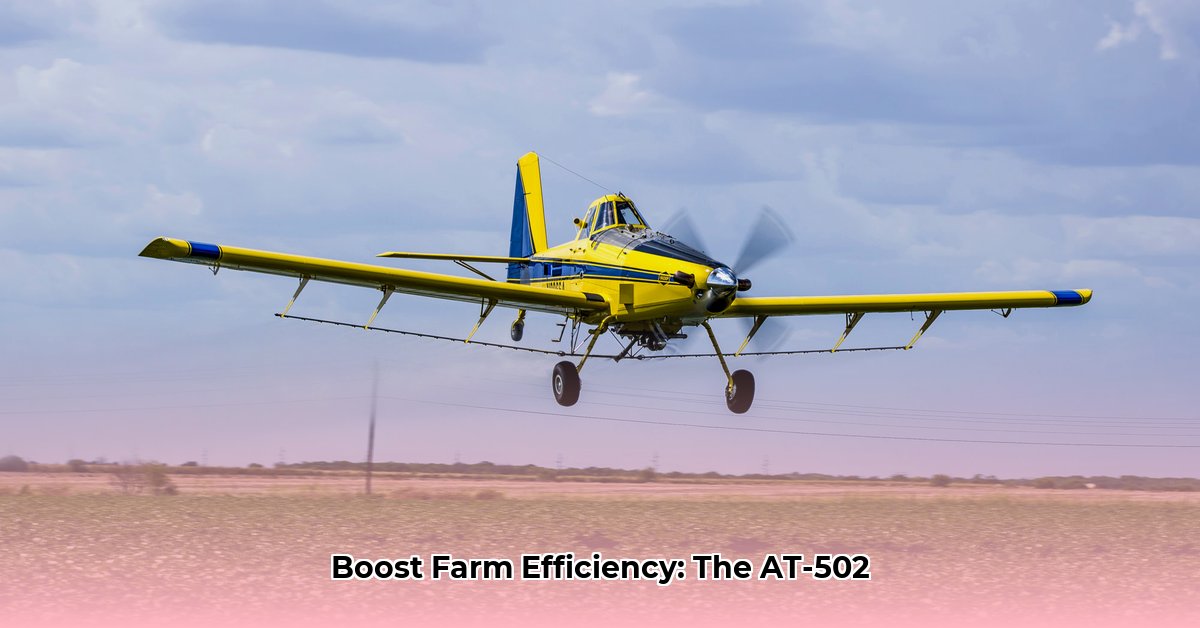
Ready to optimize your farm's productivity and embrace sustainable practices? The Air Tractor AT-502 series, encompassing the AT-502B and the AT-502XP, offers powerful solutions for efficient and environmentally conscious agriculture. For comparison with another model, see the Air Tractor 802 Fire Boss information. This comparative analysis delves into the key differences between these models, empowering you to make an informed decision based on your specific operational needs and environmental goals. We will explore specifications, performance, sustainability, costs, and operational factors to guide your choice, acknowledging limitations due to currently available data.
Specifications and Features: AT-502B vs. AT-502XP
Choosing between the AT-502B and AT-502XP requires a careful consideration of their respective strengths. While detailed specifications require further research, the following table presents a preliminary comparison:
| Feature | AT-502B | AT-502XP | Notes |
|---|---|---|---|
| Payload Capacity (gallons) | 500 (1893 liters) | Data Needed | Higher payload means greater coverage per flight, increasing efficiency. |
| Engine Type | Typically Pratt & Whitney Canada Piston | Data Needed | Engine type impacts fuel efficiency, maintenance, and overall operating costs. |
| Fuel Efficiency (gallons/acre) | Data Needed | Data Needed | Crucial for determining operating costs and environmental impact. |
| Wing Design | Standard, versatile | Data Needed | Wing design influences performance in various weather conditions. |
| Spraying Technology | Advanced, operator-upgradable | Data Needed (Likely advanced) | Precision spraying minimizes pesticide use and environmental impact. |
| Maintenance Access | Data Needed | Data Needed | Easier access reduces downtime and maintenance costs. |
The lack of comprehensive data, particularly concerning the AT-502XP, limits our ability to make a thorough comparison at this stage. This underscores the need for further research from Air Tractor and independent testing.
Performance Comparison: A Need for Quantitative Data
To accurately compare performance, we require quantitative data on fuel efficiency per acre, operational costs (including labor and maintenance), and application speed under diverse conditions (e.g., high temperatures, high humidity, temperate climates). Graphs visualizing this data would greatly enhance the analysis. Currently, this crucial information is unavailable, and further research is needed to fill these gaps.
Sustainability Analysis: Minimizing Environmental Impact
Both aircraft models offer potential for sustainable agricultural practices. Reduced fuel consumption per acre translates to lower greenhouse gas emissions. Furthermore, precise spraying systems can minimize pesticide use, benefiting both the environment and farm yields. However, a comprehensive assessment requires data on fuel efficiency, pesticide application rates, and the potential for negative consequences, such as soil erosion. Mitigation strategies need further investigation to provide a complete picture of each model's environmental impact.
Cost Analysis: Total Cost of Ownership (TCO)
A robust cost analysis is crucial for informed decision-making. The TCO encompasses the initial purchase price, maintenance costs, fuel expenses, pilot training, and operational expenses. A detailed comparison, ideally presented as a table or incorporating ROI calculations, is necessary to quantify the financial implications of each model. Currently, the lack of sufficient data prevents a comprehensive cost analysis.
Operational Considerations: Practical Aspects of Deployment
Operational considerations significantly influence the feasibility and overall efficiency of each aircraft. Factors to consider include:
- Maintenance Accessibility: Ease of access to critical components impacts downtime.
- Pilot Training: While both models likely require similar basic training, the AT-502XP's potentially enhanced performance capabilities may necessitate additional, specialized training.
- Climatic Adaptability: How effectively does each model operate in various weather conditions, including high temperatures and humidity? This affects operational efficiency and safety.
Conclusion: Navigating the Choices
Currently, a definitive recommendation favoring either the AT-502B or AT-502XP cannot be made due to significant data limitations. Further research is critical to provide a comprehensive comparison of their performance, cost-effectiveness, and environmental impact. The current analysis highlights the importance of data collection and underscores the need for more detailed specifications from Air Tractor and independent testing organizations.
Recommendations for Stakeholders
To enhance analysis and decision-making, we recommend:
Data Collection Initiative: Collaborate with Air Tractor and agricultural researchers to conduct rigorous field trials to collect performance data under diverse operational conditions. This should include fuel efficiency, application rates, and detailed cost breakdowns for both aircraft models.
Environmental Impact Study: Conduct a comprehensive environmental impact assessment to analyze pesticide use, greenhouse gas emissions, and potential for soil erosion. This should encompass best practices for mitigating any environmental risks associated with aerial application.
Cost-Benefit Analysis: Perform a detailed cost-benefit analysis using the gathered data to comprehensively compare the TCO and ROI for each aircraft model.
By addressing these gaps with rigorous data gathering and analysis, we can create a definitive guide to help farmers make the optimal choice for their agricultural operations, prioritizing both efficiency and sustainability.